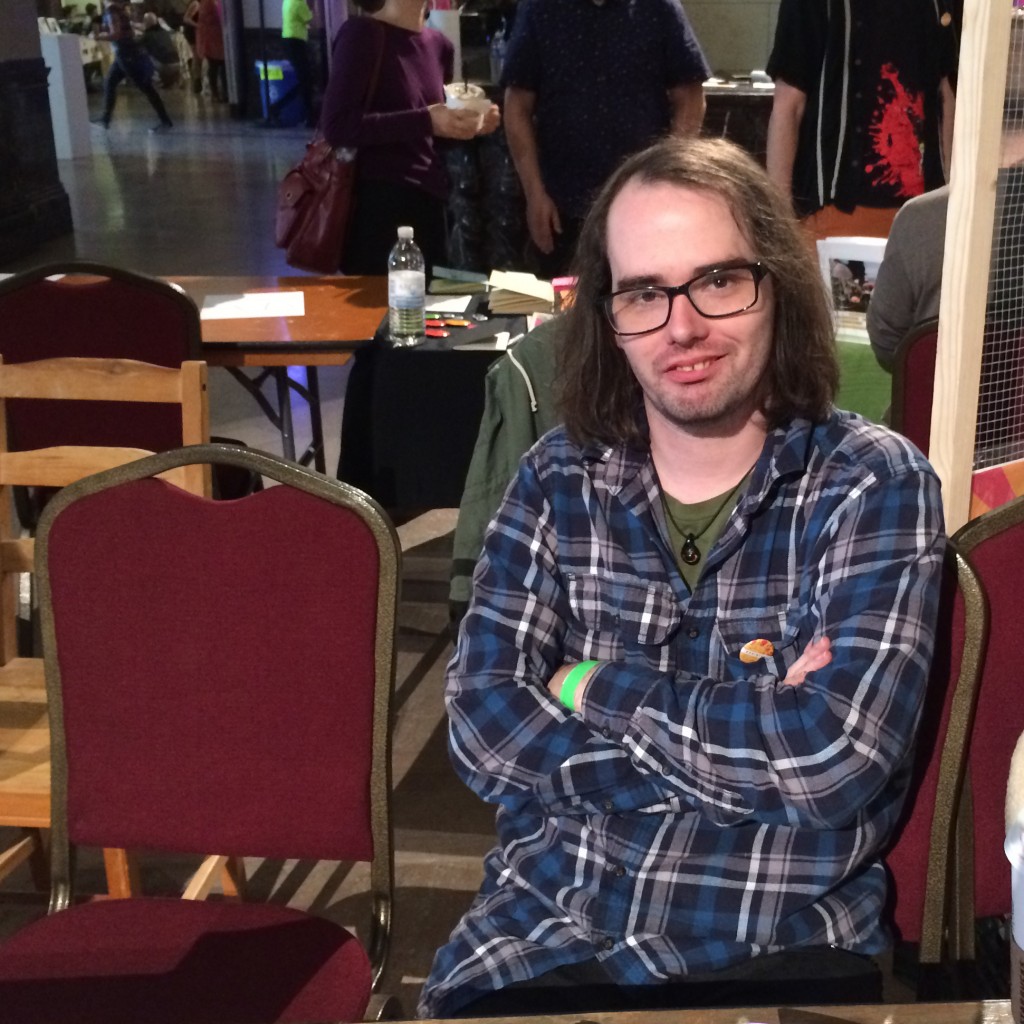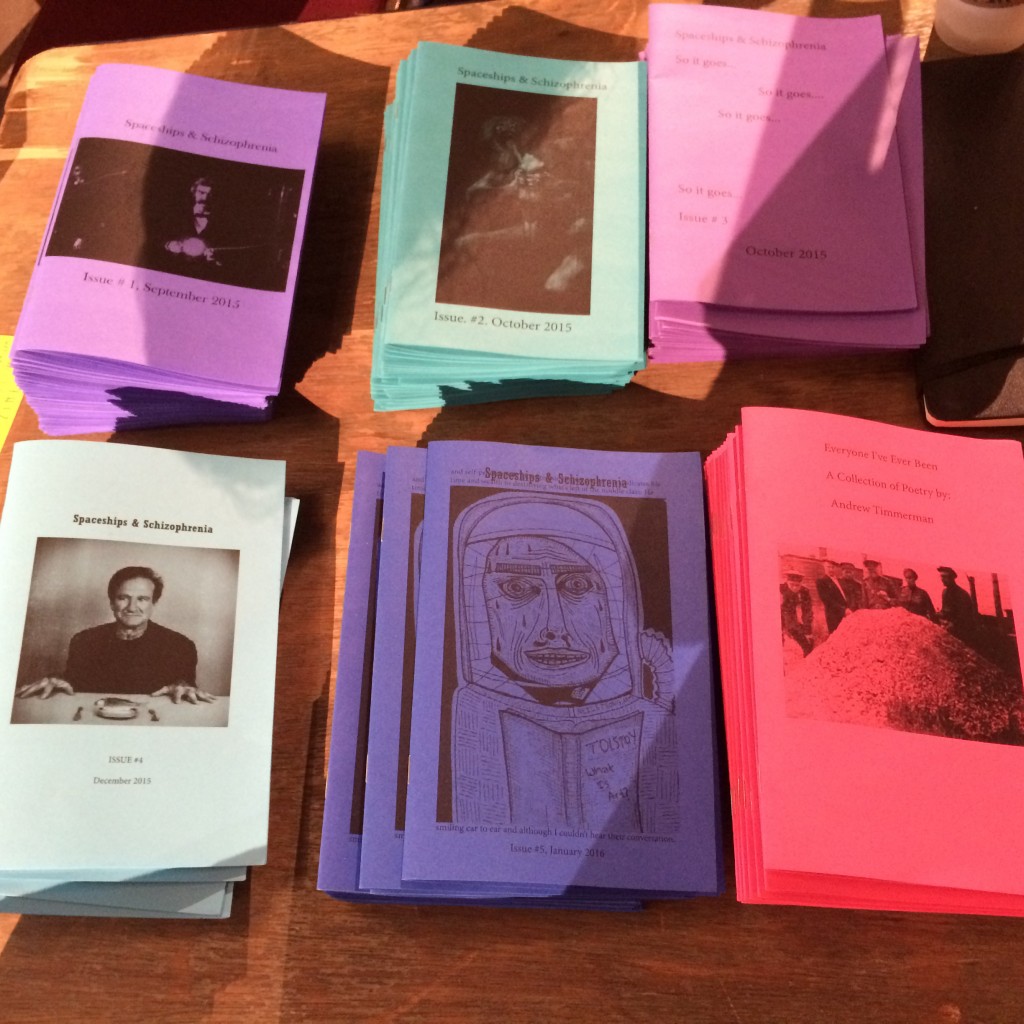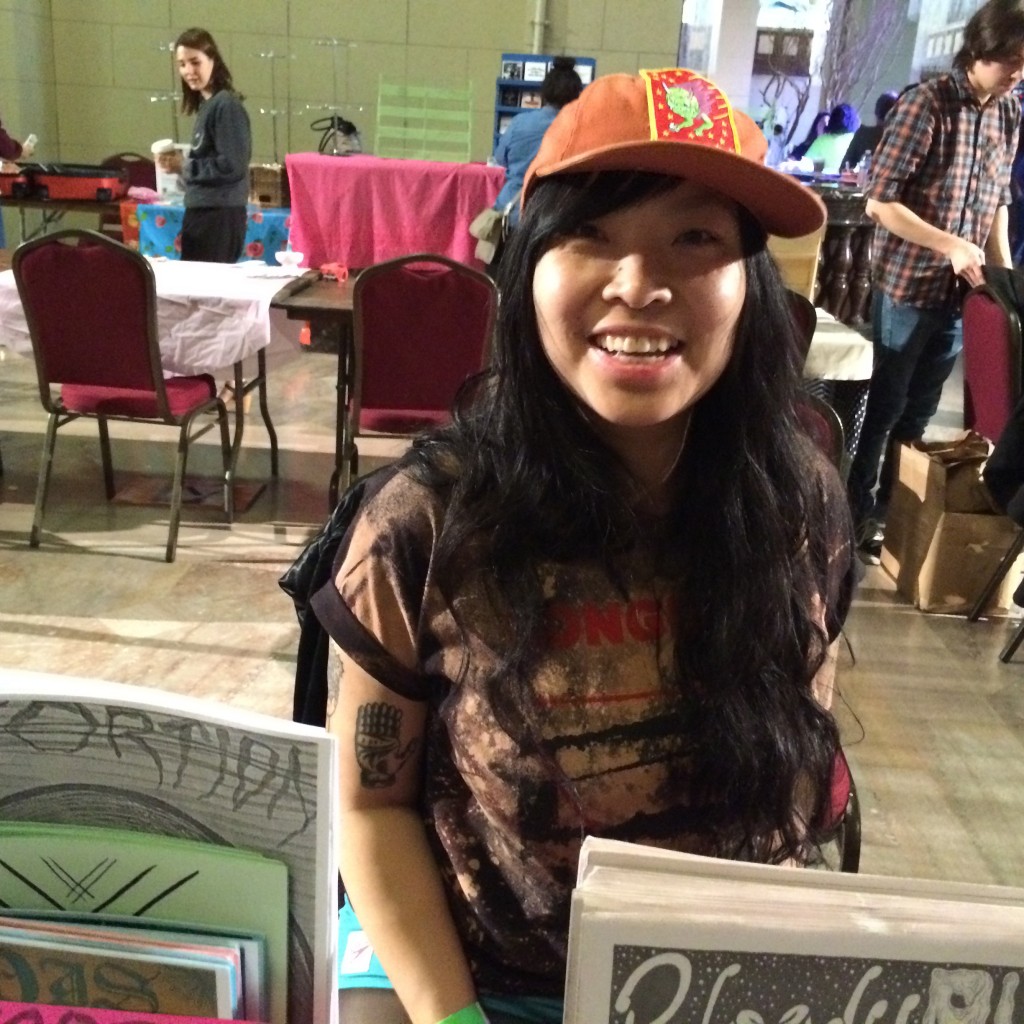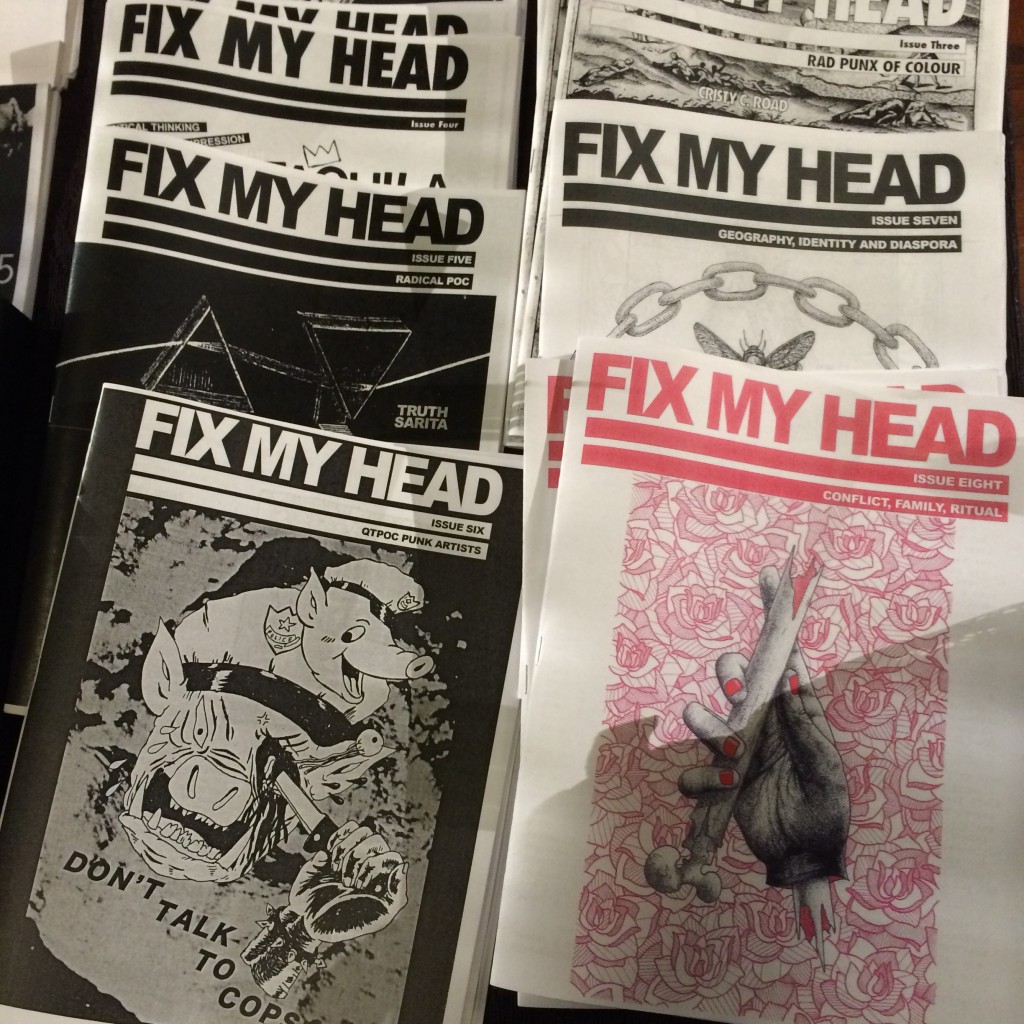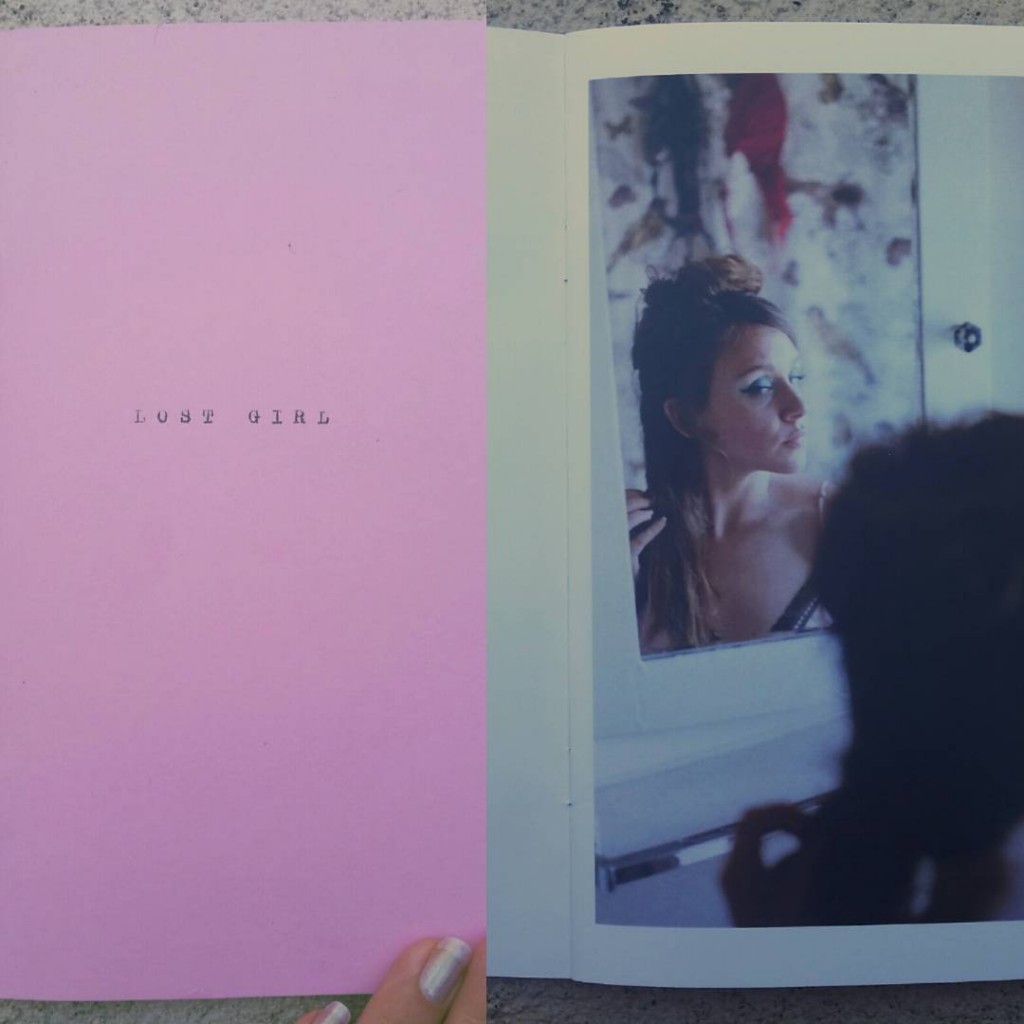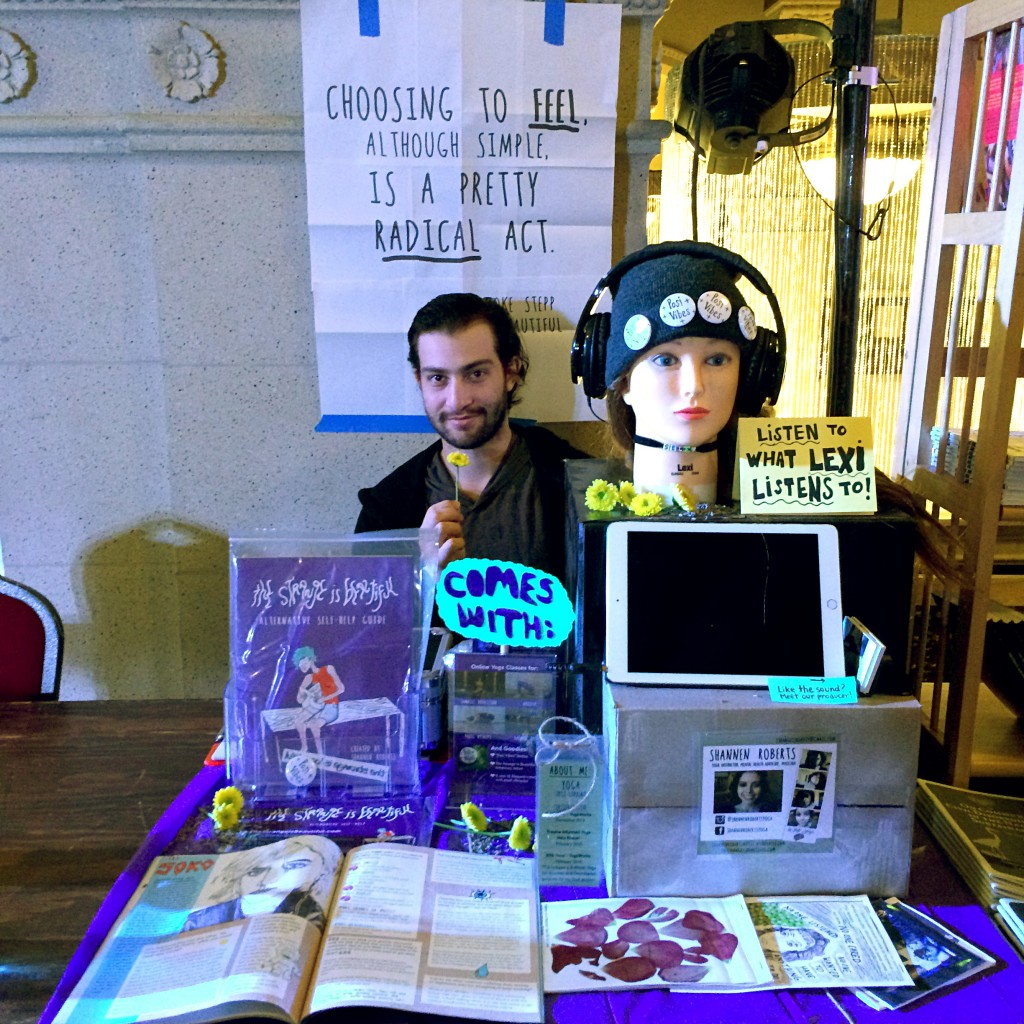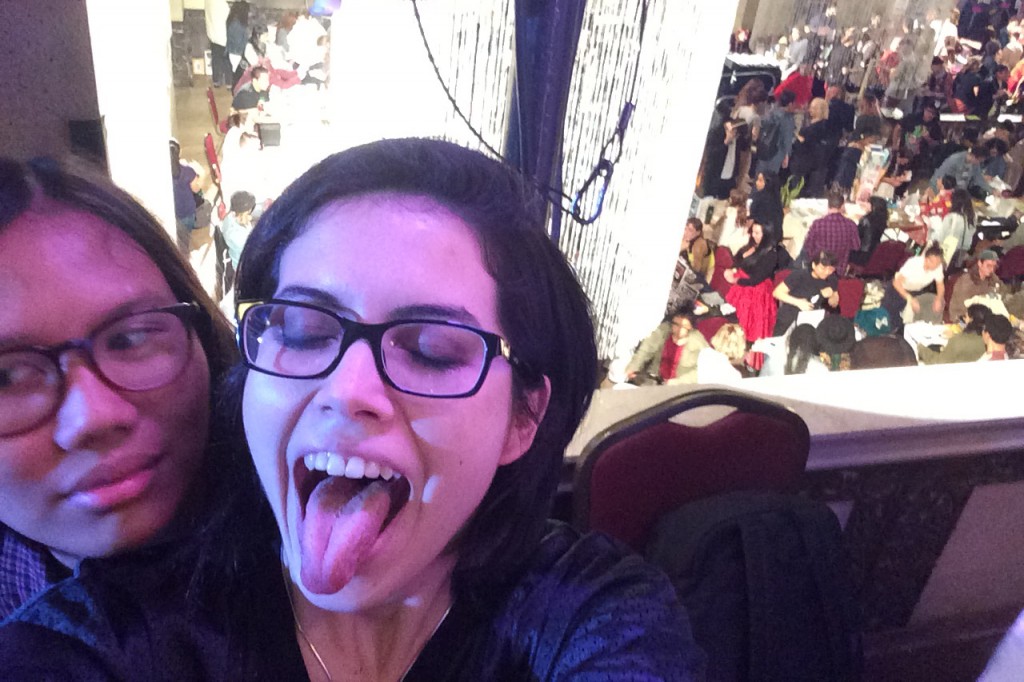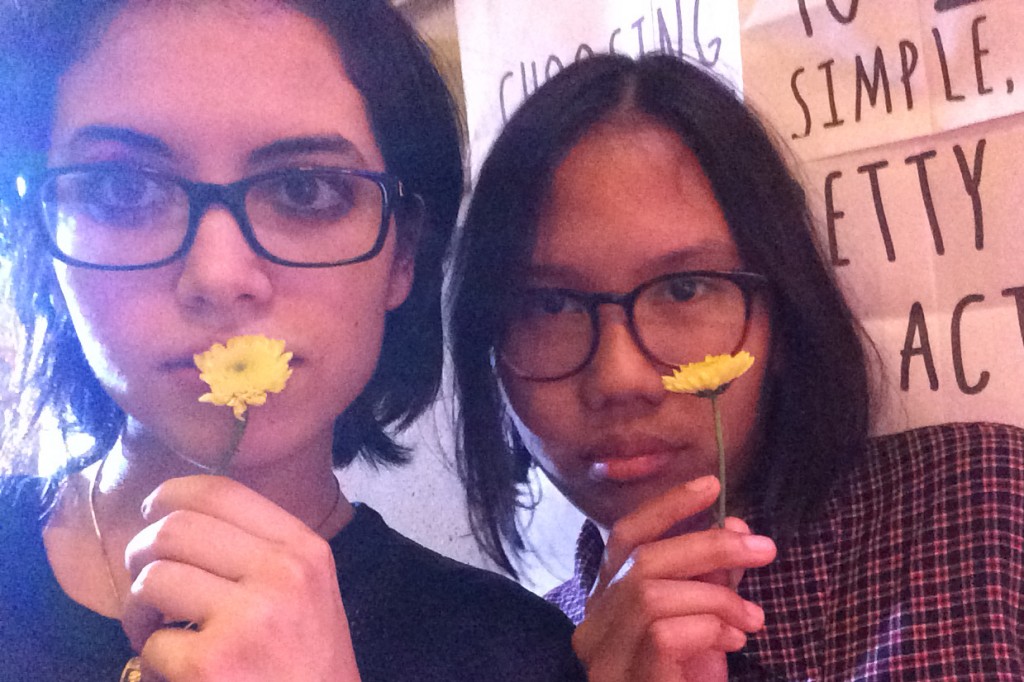I had an AMAZING time offering The Strange is Beautiful Alternative Self-Help Guide at L.A. Zine Fest 2016! Besides offering the guide, I was honored to interview three exhibitors of diverse backgrounds, a UCLA zine librarian, a Skylight Books zine lover employee and last year I had the opportunity to interview Daisy Noemi, one of the organizers of L.A. Zine Fest, for a zine community piece <333 I love the zine community, and I hope you fall in love with them too!
Below is:
- The zine community piece
- Photos of the lovies who bought the guide at the festival
- And above is a preview video of the guide that shows peeks of what L.A. Zine Fest was like :)
Sending you ++posi vibes++
Shannen Roberts
Creator of The Strange is Beautiful
Fall in Love with Zines and the Zine Community
More than 3,000 people swarmed the first two stories of The Majestic Downtown on Spring St. on March 6, 2016 from 11 a.m. to 6 p.m. in historic downtown Los Angeles. The 5th annual L.A. Zine Fest was organized and run by three people – Rhea Tepp, Kenzo Martinez and Daisy Noemi – and their team of volunteers.
“It was exhilarating to see so much interest in zines,” said Julia Glassman, UCLA zine librarian, who was featured on a panel at L.A. Zine Fest.
A maze of tables featured 205 exhibitors selling mostly zines, but also books, buttons – one of which said “Sensitive Boys Gang” – tote bags, vegan cupcakes, print art and there was even an Octopus video game. Besides exhibitors, the second floor had a zine archive and library, while the first floor offered gender neutral bathrooms and a photo station. Two blocks from The Majestic Downtown, L.A. Zine Fest readings and panels took place at Spring St. Bar, The Falls Lounge and The Last Bookstore from noon until 8:30 p.m. closing with Alice Bag and V. Vale.
“…people appreciate zines because they’re so bare and so vulnerable that – even though they probably forgot, at some degree, how to be vulnerable in the real world or with an actual person – it’s easier for them and comforting to know that there are other people not necessarily within the same neighborhood, but that exists somewhere and that have the exact same thoughts or feelings,” said Noemi.
People have been self-publishing small pamphlets to share knowledge or change perspective on things like politics and as a way to easily share art since “the mass production and accessibility of the Xerox copier in 1959,” said Clark of Skylight Books. However, the word “zine” – pronounced “zeen” – to describe these small booklets wasn’t used until science fiction “fan magazines” erupted between 1930 and 1960 in the United States, shortened to “fan zine” and then finally into “zine.” Zines kept growing and evolving during the punk scene in the 70s and the Riot Grrrl zines of the 90s. Today it has grown into a culture of all different types of zines – comics, grrrl zines, reviews and resource, distros – covering a vast variety of topics – music, politics, self-care, personal, activism, women, LGBTQ and more.
“There’s something for everyone,” said exhibitor Ava Alamshah.
Even with popularity of the internet, blogs and social media, interest in zines continues to grow. Zine festivals like IE Zine Fest, OC Zine Fest, L.A. Art Book Fair, Blk Grrrl Book Fair, OC Anarchist Book Fair and Long Beach Zine Fest have only recently popped up within the last five years in Los Angeles while Chicago started in 2010, and Portland and San Francisco zine festivals have been active for 15 years. This “zine renaissance” as exhibitor Andrew Timmerman describes it, has become so known that you can even Yelp “zines” and locate local zine stores in Los Angeles such as Skylight Books or The POP-HOP Books & Print.
“It’s about a physical product. It’s not just about communicating now, it’s about an artifact,” said Vo.
Zinesters had flown in from New York, bussed from Santa Cruz or walked down the street to showcase their newest creations at L.A. Zine Fest 2016.
*
One of those zinesters was Andrew Timmerman (pensiveprolepresss.com) from Bakersfield. He tabled his Spaceships and Schizophrenia zines and work from The Micro Press and Pensive Proletariat Press at table number 145.
Due to poverty, birth defects and schizophrenia, Timmerman never felt any sense of belonging as a kid, until 16 years ago when he was introduced into the punk community that led into his love for zines. His friend’s older brother gave him a burned mix CD of punk music that he obsessively listened to and a few weeks later, him and his friends went to their first punk show at Jerry’s Pizza in his hometown of Bakersfield.
“I’ll never forget, it was my second show. At the time circle pits were in fashion. My 80 pound 4’10” self found the courage to jump in, and I immediately got knocked down. Everyone was wearing Doc Marten boots and I was like, I’m gonna die. But then this guy with a terrible haircut and a Sex Pistols T-shirt kind of stopped, looked down at me, smiled, gave me his hand and I was like okay! This is who I am, this is where I belong,” said Timmerman.
As Timmerman absorbed himself into the punk world, he discovered a zine library at a local record store and zines for sale on online punk message boards.
“I am not a musician, and I just wanted to make some contribution to my local scene and punk community at large.”
He always aspired to write, but didn’t like submitting his work to magazines because they’d either dull the edges of his pieces or reject them, so zines gave him a the opportunity to be heard. Issue four of his Spaceship and Schizophrenia zines is printed on light blue paper with black ink and stapled together. Inside are 19 pages of solely text, and the cover features an image of Robin Williams at a dinner table.
“My primary goal is to reduce the stigma and alienation experience by those of us with mental illness.”
Timmerman details his personal experiences with schizophrenia and offers his contact information and hotlines for anyone that needs support in his zines.
“Quite a few people have come to me and said that they were somehow consoled by the zines, so that’s just exhilarating and really exciting.”
*
Anna Vo, an elementary school teacher currently residing in Portland, Oregon, also consoles people with their personal zines Vulture on their experience being a survivor of different kinds of assault.
They’ve been traveling all their life, starting from when their Vietnamese parents conceived them on a beach at a refugee camp in Thailand, to when they were born in New Zealand. They lived majority of their youth in Australia, where they were subject to racist violence.
“Maybe five years ago there was the Indian Bashings where anyone that was Indian would get bashed up in Melvin for being Indian,” said Vo. “And previous to that, I lived in a white surfy town and we were the only asians and I got beat up as soon as they saw me because I was Asian,” said Vo.
They continue to elaborate on how racism is talked about in the United States, but is invisibilized in Australia.
“You can’t talk about it.”
At age 17, Vo began traveling on their own. They discovered zines when they were squatting in London. Not having a network of friends and struggling with a personal relationship, they created Vulture to release. They didn’t expect it to be something that people would be interested in.
Soon it was spread to strangers they had never met, and they started their second zine called Fix My Head featuring interviews of marginalized and POC punk musicians who are fighting against racism, sexism, homophobia, misogyny and more. After their second issue, they emailed Osa Atoe, violinist in the punk band New Bloods and historian and writer of Shotgun Seamstress, a zine by and for black punks, asking if they could interview Atoe.
Clark Allen of Skylight Books, an indie bookstore in Los Feliz, California that provides a home for zines, noted that Osa Atoe’s Shotgun Seamstress series was the most impactful zine he’s ever read.
“Not that the ideas were necessarily new, but I was immediately aware that it was loaded with voices that had been stifled from my ears for most of my life. I almost feel like it should be required reading in high schools,” said Allen.
Atoe replied asking if Vo wanted to go on their Race Riot tour, and that they’d pay for her transport, food and any other necessities. Vo was confused, and asked if Atoe was sure because, they had only made two zines, they were a nobody. Atoe wrote back, “if you’ve emailed me, it’s because you’re interested in the things that we’re trying to communicate on tour.” They toured from Australia to New York for two tours in 2012 and 2013 with Atoe.
A few bands they covered in their fourth issue were Golnar Nikpour of In School, a queer and POC all-female hardcore band, the band Daighila from Rembau, Malaysia and Mars from Aye Nako, a trans/queer band from Oakland, California. Vo tells the stories of people that aren’t heard in the mainstream, and wants to see more zines like theirs being made by people who might otherwise have difficulty expressing themselves, because they want to know what they are going through.
“Honestly, I would love to see writings and literature from North Korea, places that it’s really hard to access what’s going on there, I’d like to see some sort of smuggled print,” said Vo.
“I think the power of zines is that any single person with a pen and a piece of paper can do it.”
*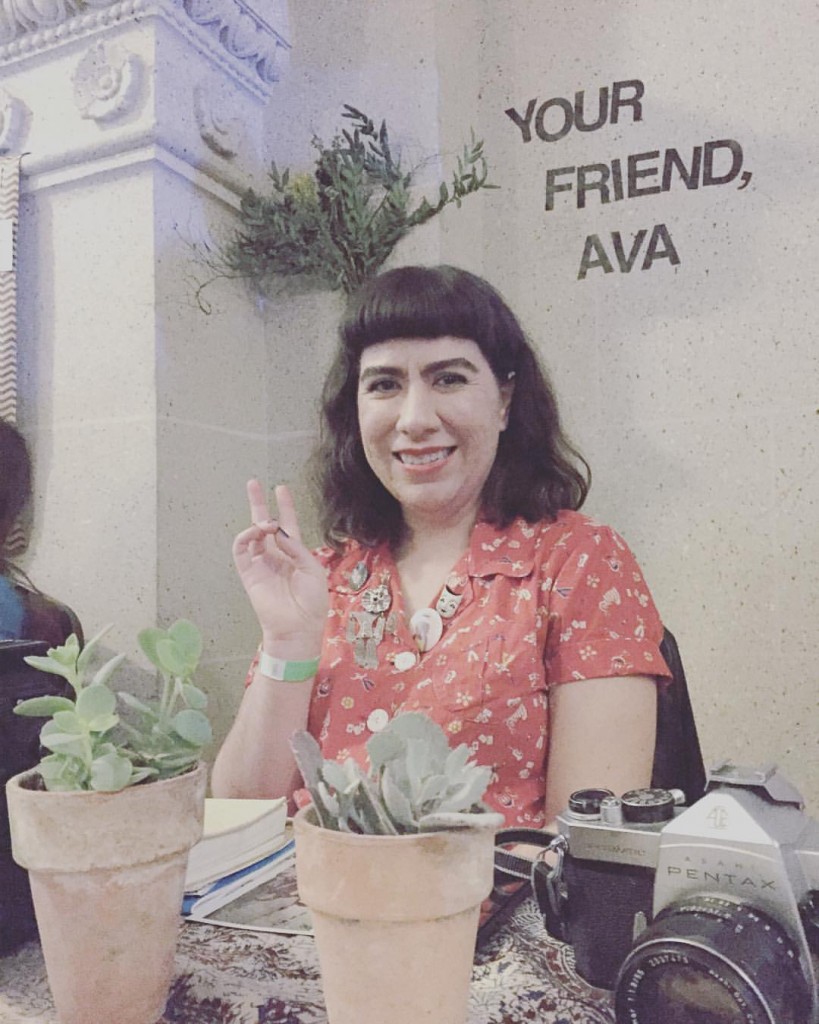
Another zinester, Ava Alamshah, lives locally and focuses on vintage and photography.
“I love everything vintage! I want to escape into that world,” said Alamshah, “My mom tells me I live in a time warp.”
Bold, capitalized black text read, “Your Friend, Ava” on the back wall of the second floor of the Majestic Downtown at table number 191. Her Assyrian nanna’s old, beige tablecloth with paisley print lay delicately on her table, on top of which was a rustic, vintage dark-brown tool box that held samples of her zines. Two photobooks were laid out and succulents welcomed you to the edge of her table. On display were two cameras that she uses for her work, one of which was a Yashica mat 124 twinland boxy camera that looks like a rolloflex, and could have been created anywhere between the 50s and the 80s.
“I like film because it’s a surprise and you have to be patient,” said Alamshah.
The cost of zines can be minimal if printing in black and white, but Alamshah loves to see her photo zines in color. She lays out all of her zines in Photoshop, numbers the pages and sends it to Copycat on Hillhurst St. in historic downtown Los Angeles, a recommended spot to print zines by the L.A. Zine Fest organizers. Last year she made 24 page books, 25 copies each and it cost over $100, but this year, the cost was almost $200 and to print 50 copies of her largest zine, it cost over $500.
“It takes awhile to make one zine,” said Alamshah, “I try to make them really precious looking.”
Her zines are often made with specialized paper from either a variety of paper given as a gift from her scrapbooking mom or from her favorite art supply store (that will remain nameless to preserve its secrecy from the mainstream). The store sources out paper, has been open for 80 years, and is where she finds paper treasures to use for her next zines such as hand dyed paper from India.
Her love for vintage drew her to a zinester from San Francisco who made a zine of David Bowie illustrations after he passed and a zine about the movies from the 1930s before the Hollywood code censored everything, sold by a man who was tabling for his wife because she couldn’t be there.
Alamshah first discovered zines when she was attending Calarts and her friends were taking a zine class with Nicole Panter. She really wanted to take the class, but being shy, she chose not to because of the requirement to read it in front of the class. Today, she participates in public zine readings.
“It’s fun if you have a safe space and an audience who understands zines and who are open minded.”
*
Julia Glassman talked openly with zine librarians and archivists Simone Fujita, Ziba Perez Zehdar, Charissa Lucille and Marna Kay for an L.A. Zine Fest panel from noon to 1 p.m. to talk about the importance of zine archiving in today’s culture. The panel took place at Spring St Bar, within two blocks of The Majestic Downtown, and was hosted by Writ Large Press.
“We had a really good discussion about curating a zine collection that reflects your values versus making sure you’re not censoring people or leaving stuff out that maybe you should be including.”
She mentioned that she was impressed by what a great job the organizers did to create a diverse variety of zinesters at L.A. Zine Fest, but was dismayed by how expensive the zines were this year compared to prior years.
“That worried me a little bit, like, oh boy, zines are selling out,” Glassman said. “When I saw zines selling for $15 to $20 I got a little bit nervous, but I don’t know, we’ll see where it leads.”
Besides archiving and collecting zines, Glassman makes her own zines. She’s made three issues of one called Blue Cloud, wrote a fanzine called “The Craft” about the movie in the 90s featuring a covenant of teenage witches, and one about breastfeeding when she first gave birth.
Glassman became intensely interested in zines after she graduated from library school, the same year of the first L.A. Zine Fest, and in 2012, started the UCLA zine library collection.
“I was really interested in getting alternative voices into the library collection.”
Glassman explains that academic collections are often corporatized because they mainly buy from major vendors.
“We should always be thinking about whose voices are getting left out of the mainstream and how we can be not just collecting those voices but actually signal boosting them.”
*
Throughout L.A. Zine Fest, Daisy Noemi was running around wearing her L.A Zine Fest shirt, walkie talkie snapped on her jeans, hustling to keep the festival running smoothly. Noemi wasn’t one of the original founders of the festival, but was later asked to be a permanent member of the team.
“I never thought that I would be an organizer. Not because I didn’t think that I was ever capable, I just never really imagined myself being in that position to help other people share what they love, I love it so much,” said Noemi.
Noemi recalls her struggle when she first moved to L.A. from San Diego. She was either working or taking hours of multiple buses she had to catch to and from work. She took any job she could get. At the Craft and Folk Art Museum five years ago, she met Rhea, Erika, Simon, Meredith and Bianca, the founders of L.A. Zine Fest.
“I remember being really shy at the Craft and Folk Art Museum where I met all the girls and asking about what’s the deal with the zine fest, and they were like, yeah it’s our first year, you should do it it’s super cheap, it’s like $15 for half a table. I was dirt poor but I was like, I can figure out how to sacrifice $15 of my non-income to go to make it happen, and I did.”
She started volunteering for them a lot, and was surprised and flattered when they invited her to be an official organizer of L.A. Zine Fest.
“Often times we worry about people’s perceptions of ourselves, so we don’t realize, people actually value you. Not necessarily that you don’t value yourself but you don’t really think about that stuff, like oh yeah, people do notice the kind of stuff that I’m doing.”
She uses her photography and art to cope with stress and to be vulnerable with people because this is something that is difficult for her. When her niece was diagnosed with brain cancer, she made all her art for and with her niece.
“She would tell me what she wanted, or whenever we went to the hospital she would always want to do arts and crafts.”
She likes producing her work on a small scale and giving it an intense personal touch. Two of her most revealing zines are “I’ll Kind of Miss You” about her emotions leaving San Diego and “I’m Sorry” about how easy it is to not say goodbye and not get closure in romantic relationships. She believes many artists struggle to find a place to showcase their work, and this is where L.A. Zine Fest comes in.
“…it’s just really all about making sure there’s accessibility within the art world.”
“We all want to have the ability to express ourselves and not be judged for it. In the official art world, you cannot express yourself to a certain degree because then you get censored, or you might be called ridiculous. I think we’re all artists if you really think about it,” said Noemi.
Photos
Just some of the qts that bought the guide <333 I couldn’t get photos of everyone because it got so busy at times :(
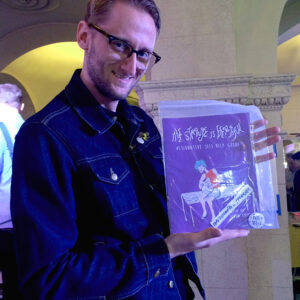
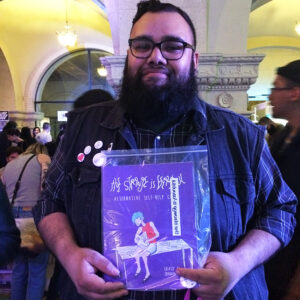
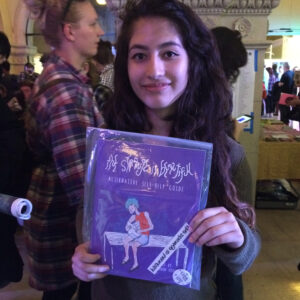
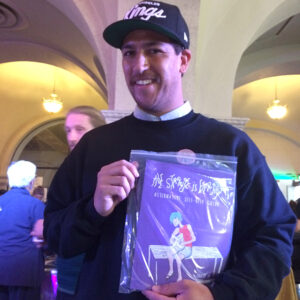
He had the coolest button vvv “Sensitive Boys Gang” bahaha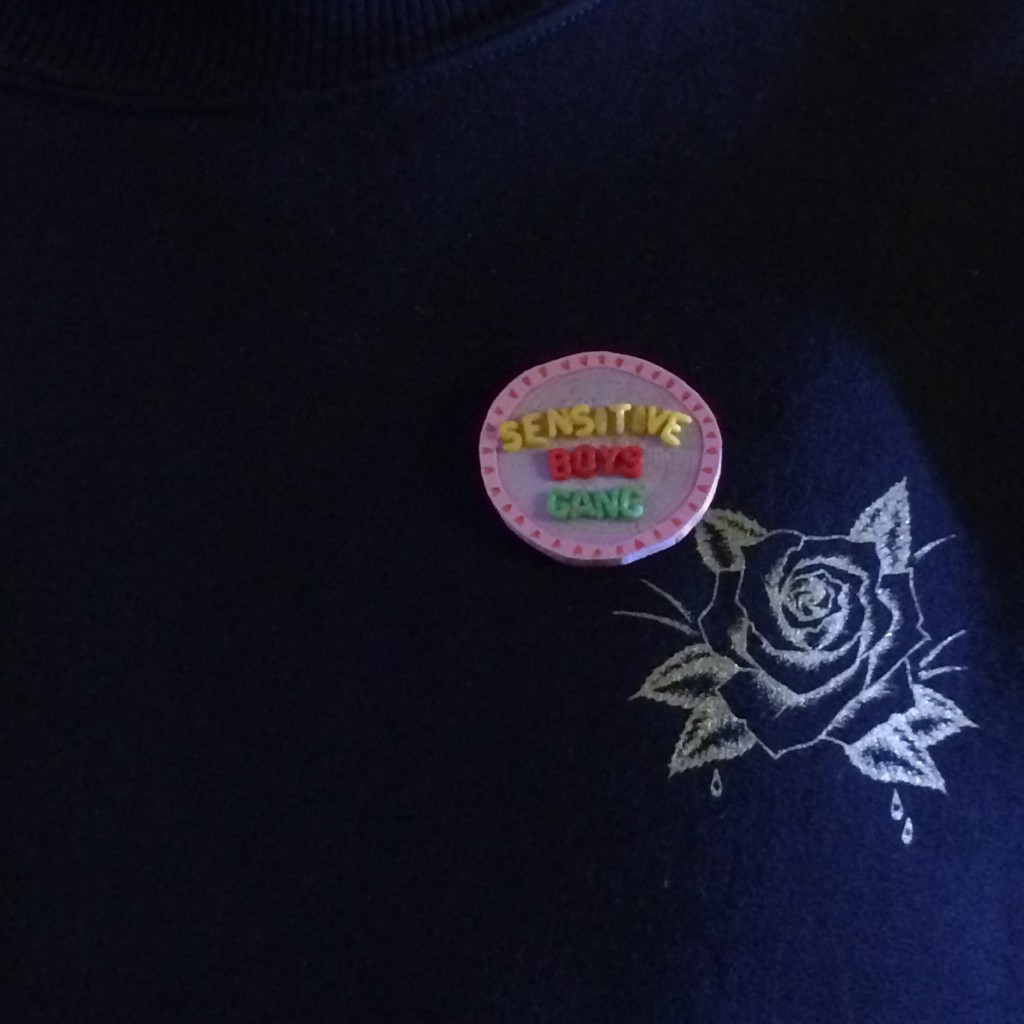
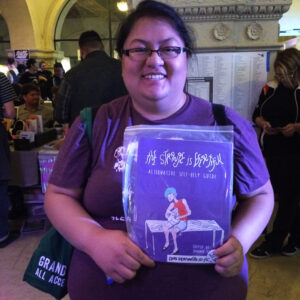
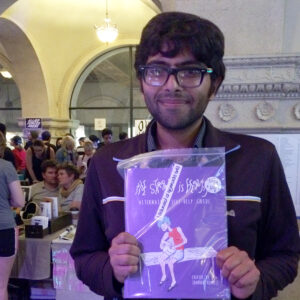
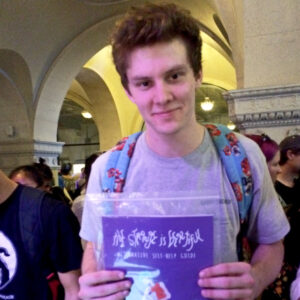
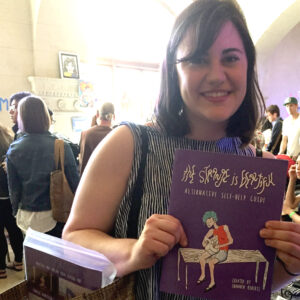
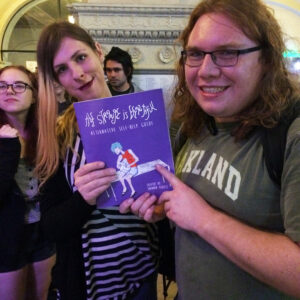
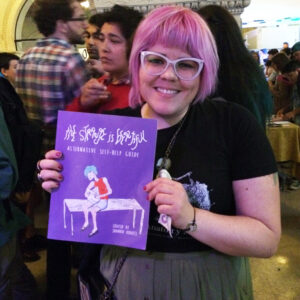
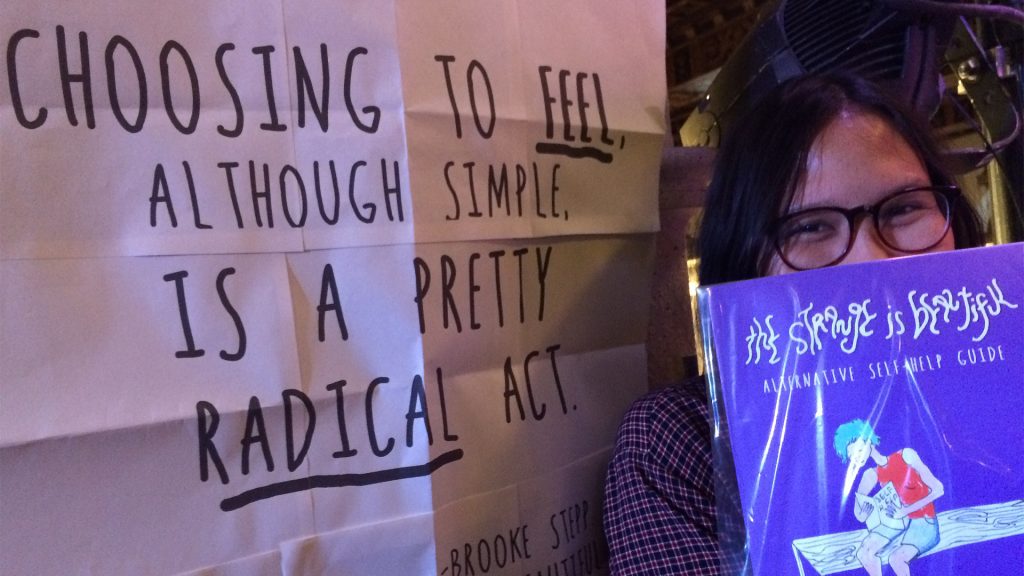
#TheStrangeisBeautiful
And here are some more photos of my time at L.A. Zine Fest!
My boo helped me set up at 8 a.m. !!!
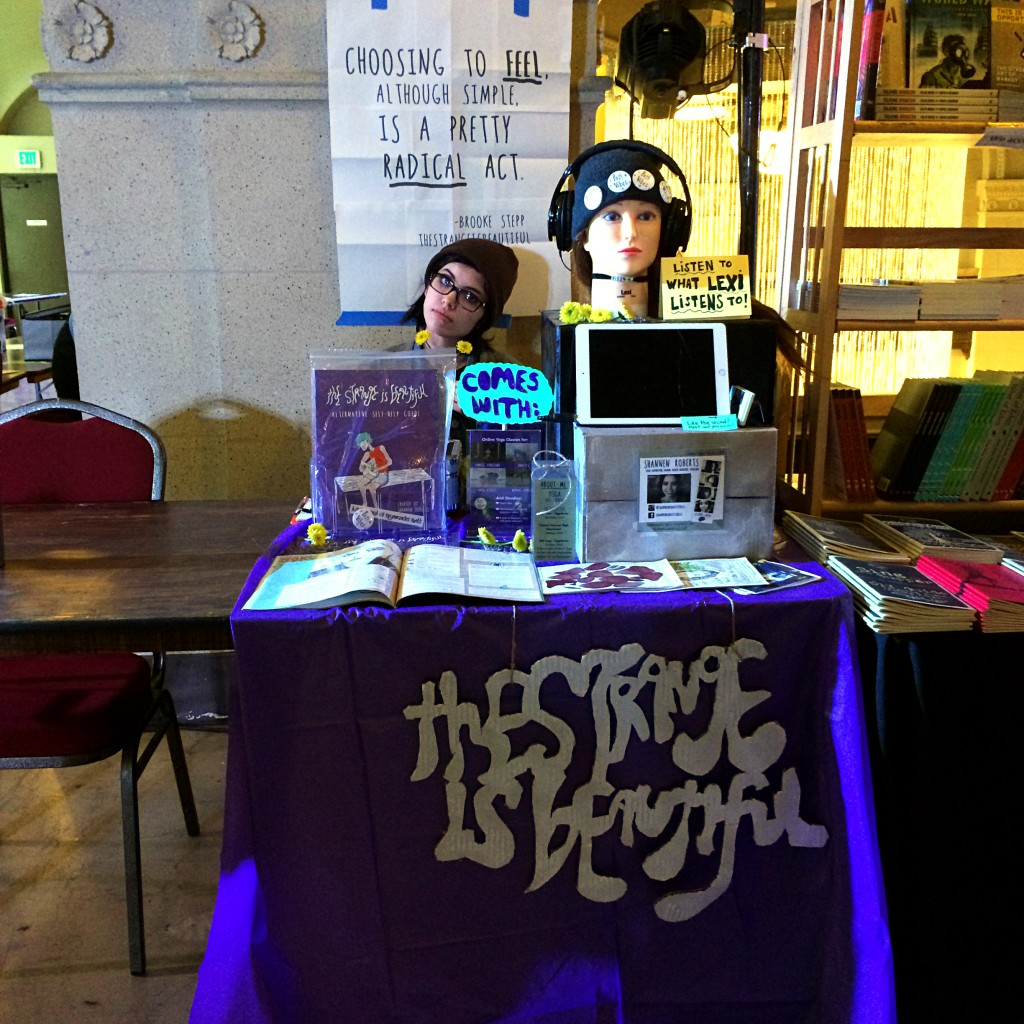
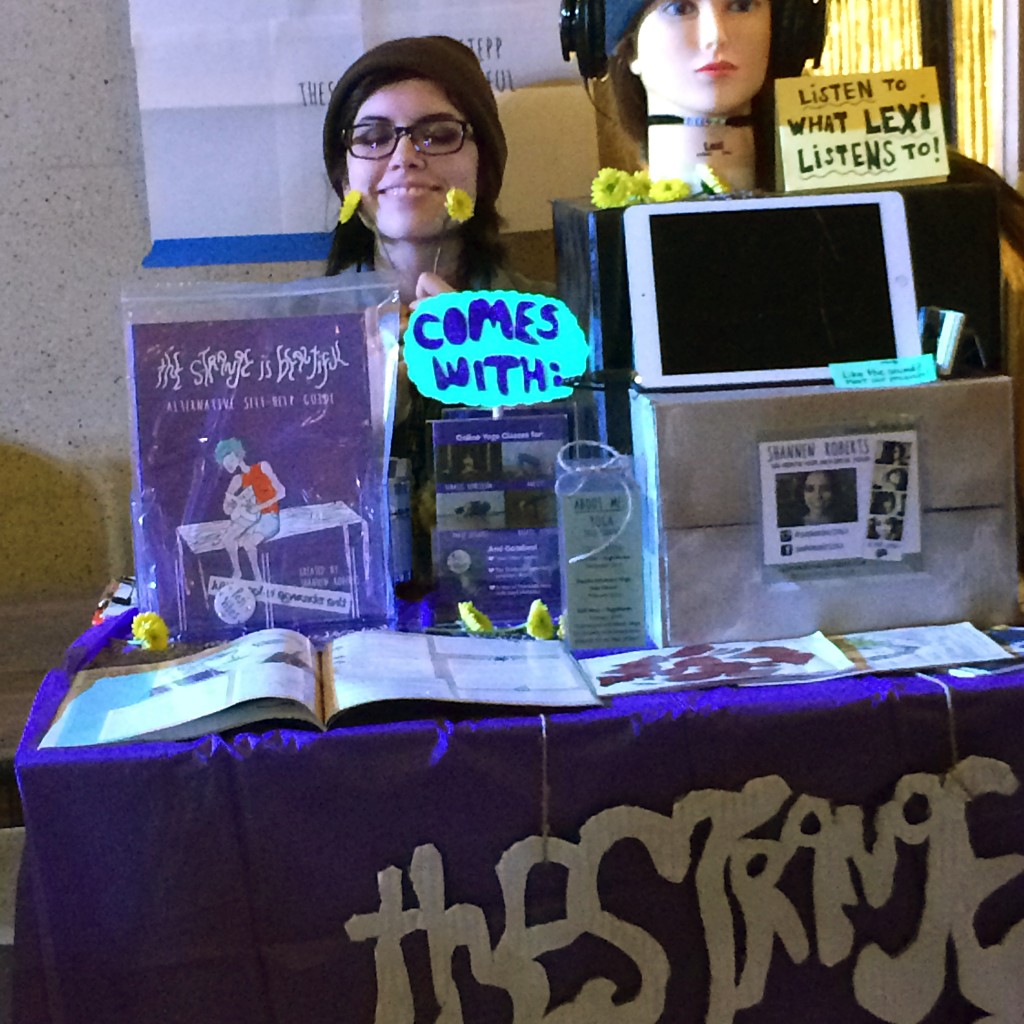
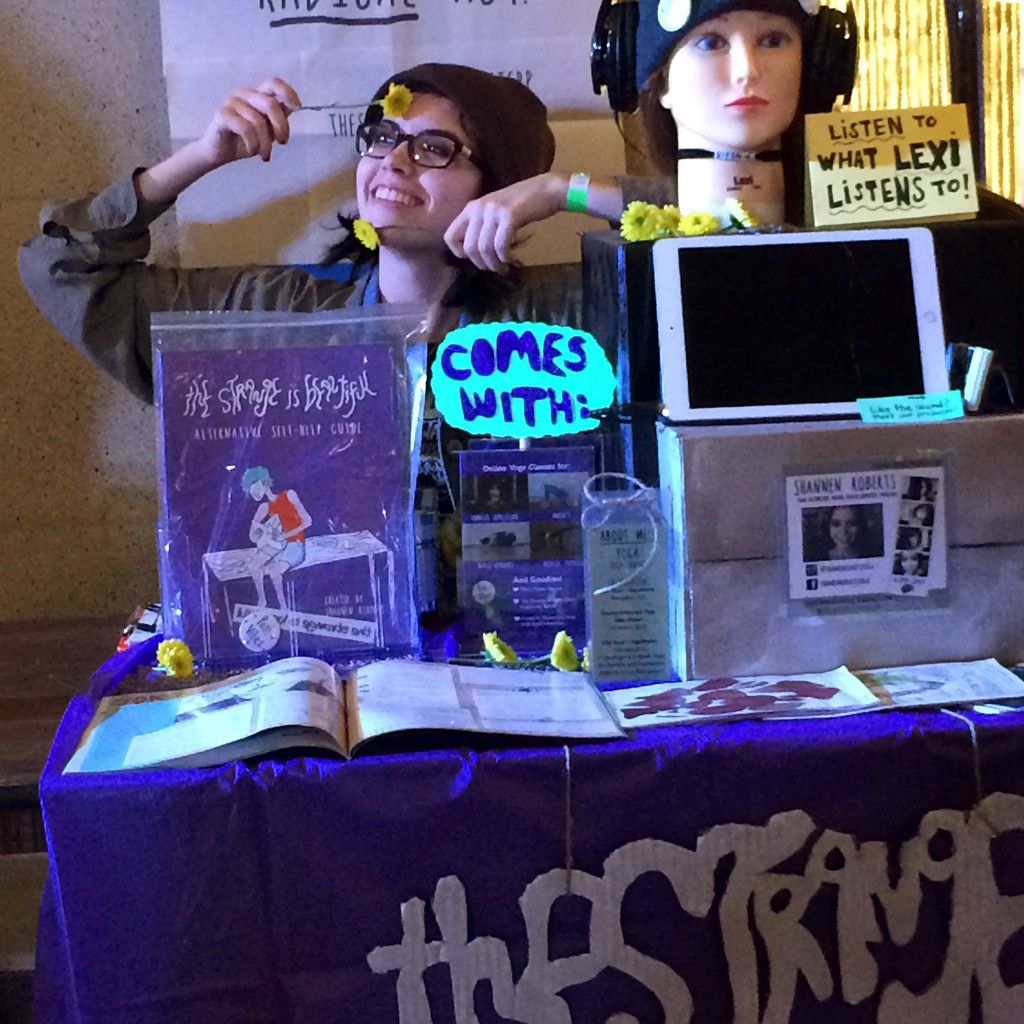
obviously extremely stoked about my cute table…
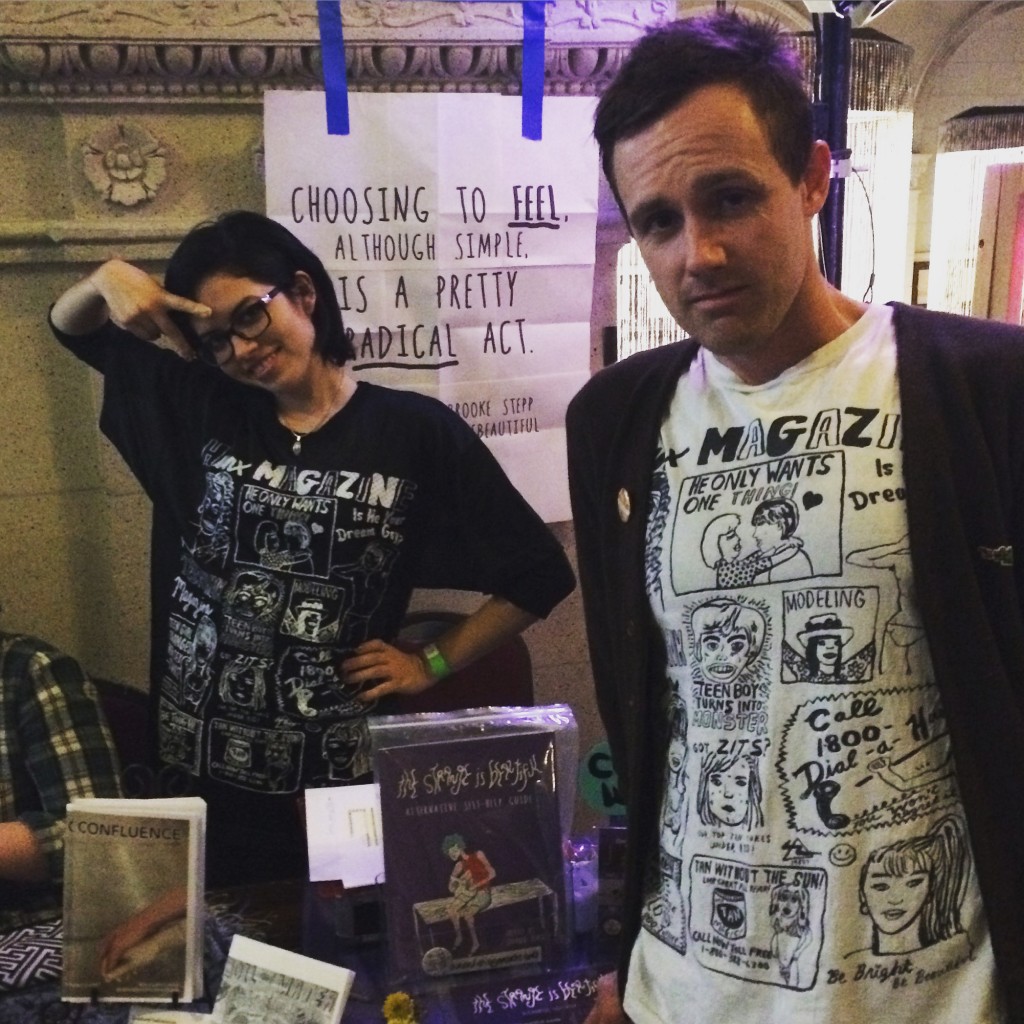
My twinny and I reppin’ Wacky Wacko gear !!
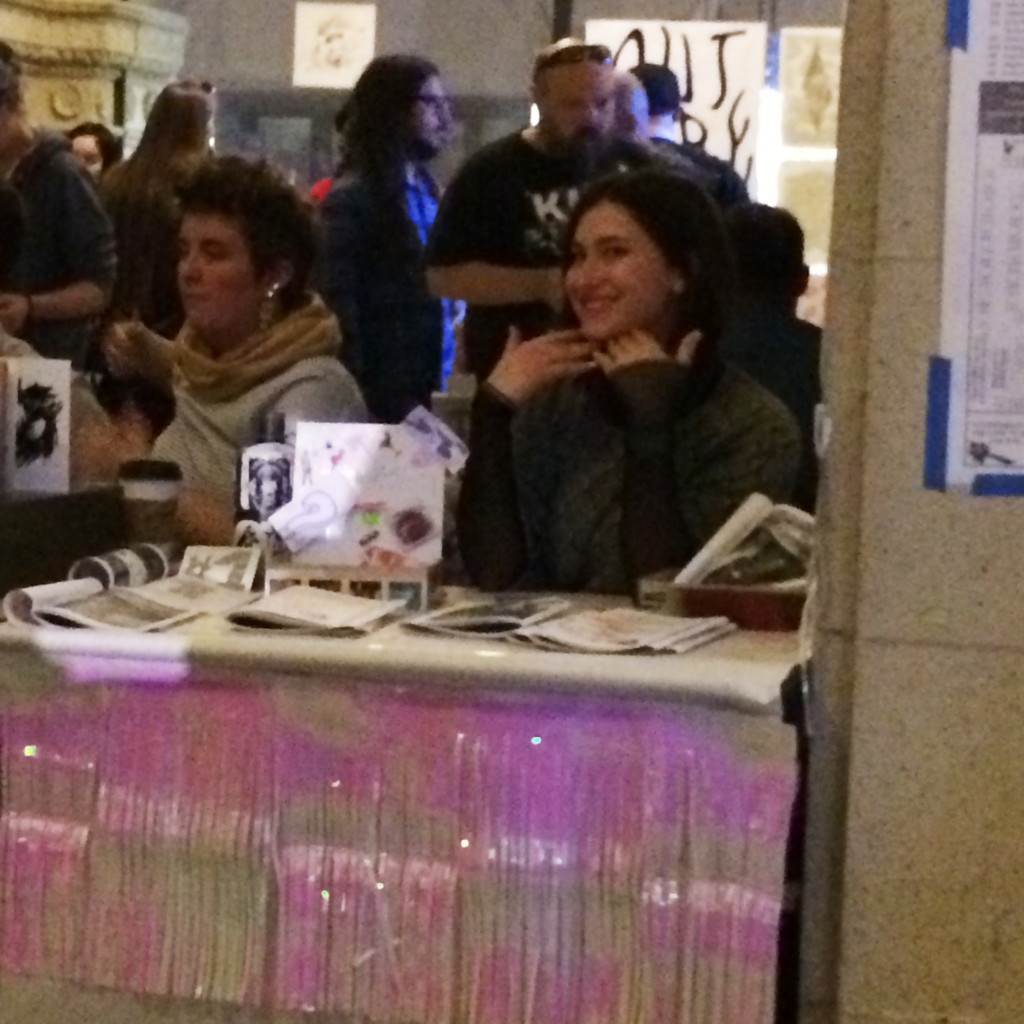
qt pie Zora just across the zine street from me hehehe
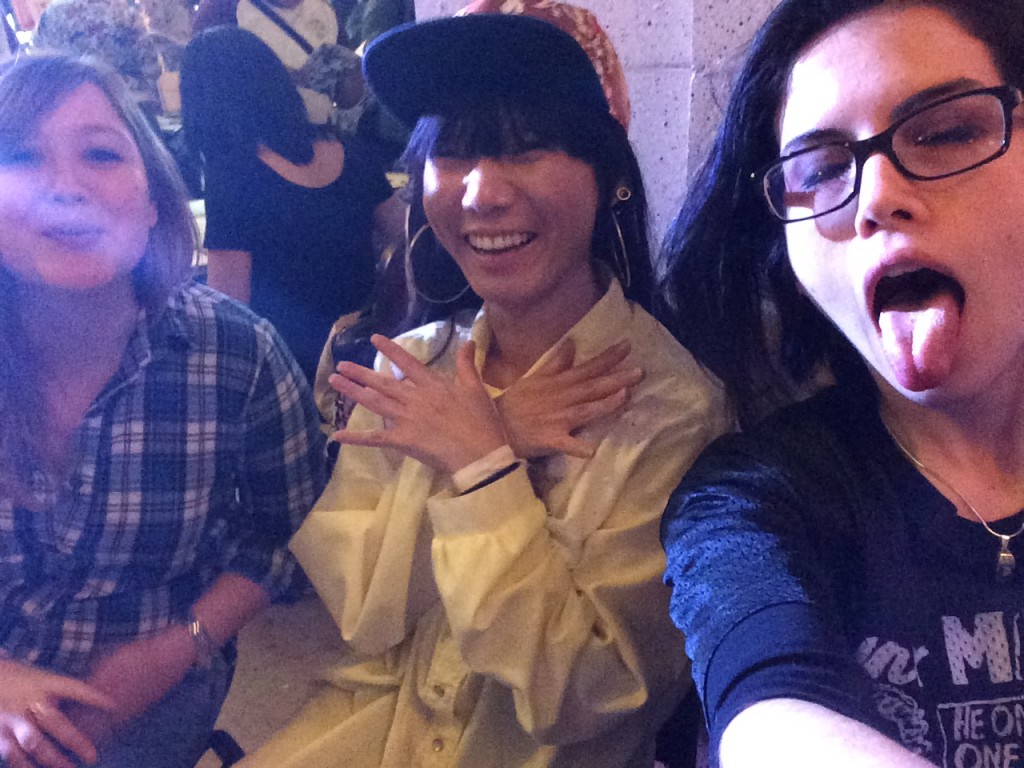
My table buddies !!! Heather and Dalin <3333
My bff Nadia who bussed all the way from Irvine to see me ANDDD got me tacos and a guide to support me xoxoxox
Diary Entry:
I’m never early to things, but I was so stoked for L.A. Zine Fest I got there at 7:30 a.m. and waited in my car until Sam (my boo <333) showed up to help me unpack. I was really nervous around noon because no one was coming to my table, and I kept thinking, “maybe this isn’t the right place to sell my guide??? maybe this guide was a bad idea!!!” But then from 12:30 until I left around 5:40 p.m., I was non-stop sharing stories about mind obstacles, discussing mental health and giving away the guide. It was the warmest feeling to know that the guide was going to people who also struggle with anxiety, panic attacks and depression. I was so thankful to have my bff Nadia show up after her hours of bus rides from Irvine to give me a taco break !! And a guy named Otis who bought the guide looked so familiar but we couldn’t figure out how we knew each other, until right as I was packing up and he said, “I know how I know you” and my friend/his girlfriend Adela popped out from behind him <333. They were so sweet and helped me lug all my stuff to my car ahh. So thankful for everyone that helped me at L.A. Zine Fest, before L.A. Zine Fest (such as Brii and Liz for stuffing envelopes and for my parents for helping me stuff the guides with goodies) and for everyone that donated to make the guide possible. Love you all :)
xoxox
Shay
